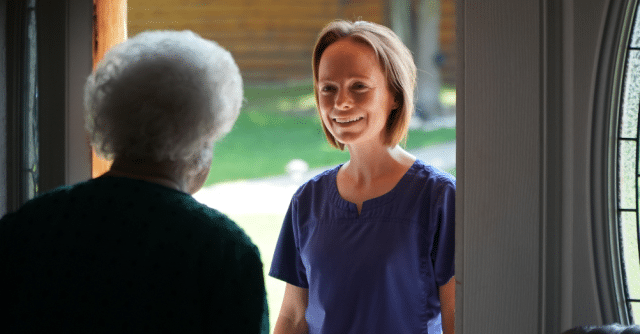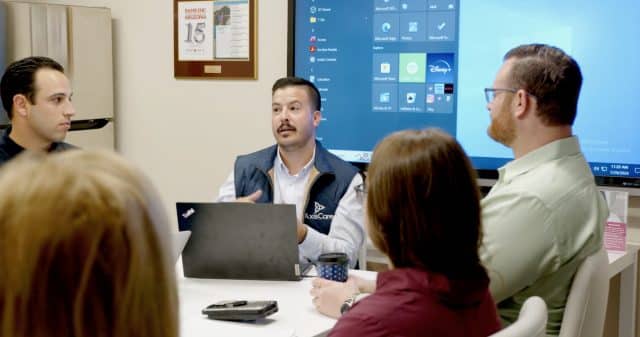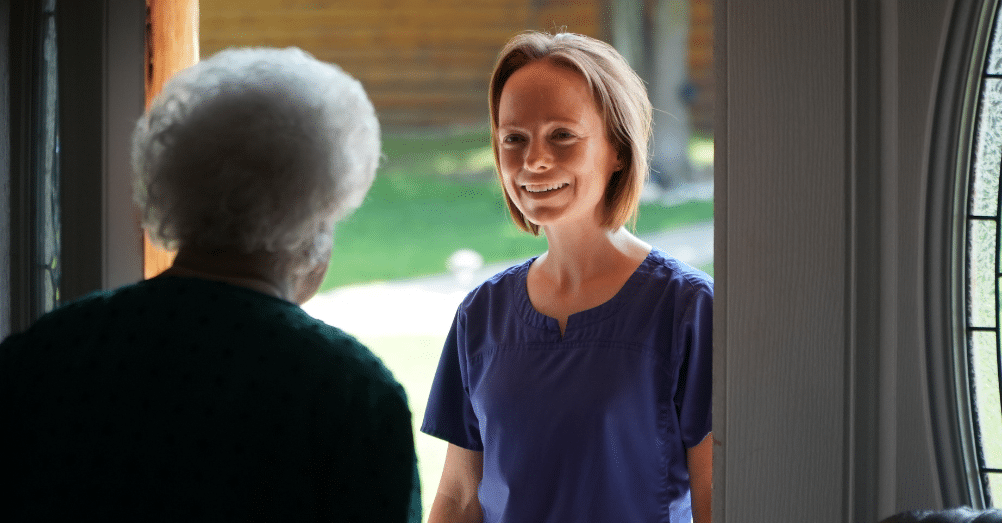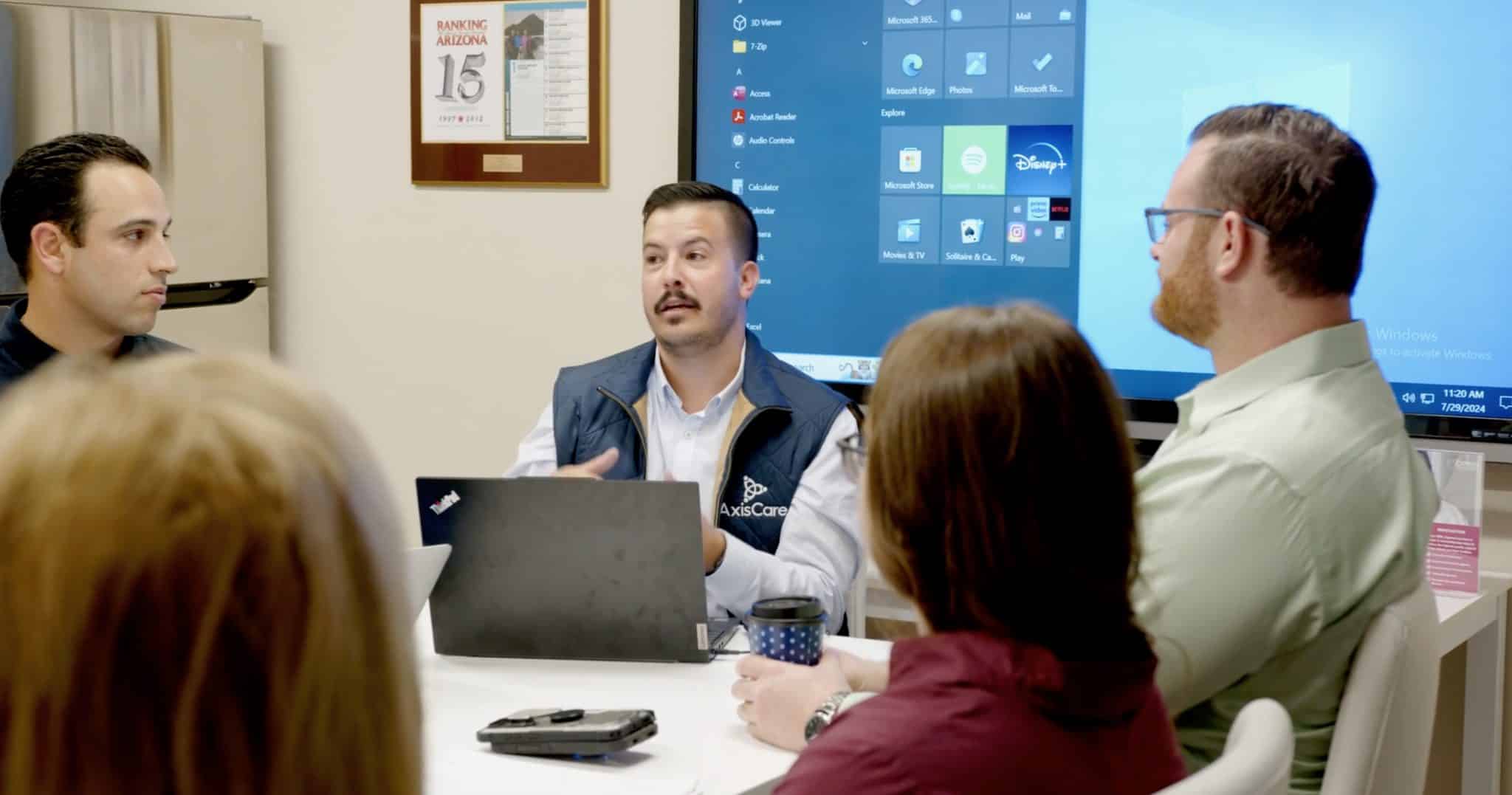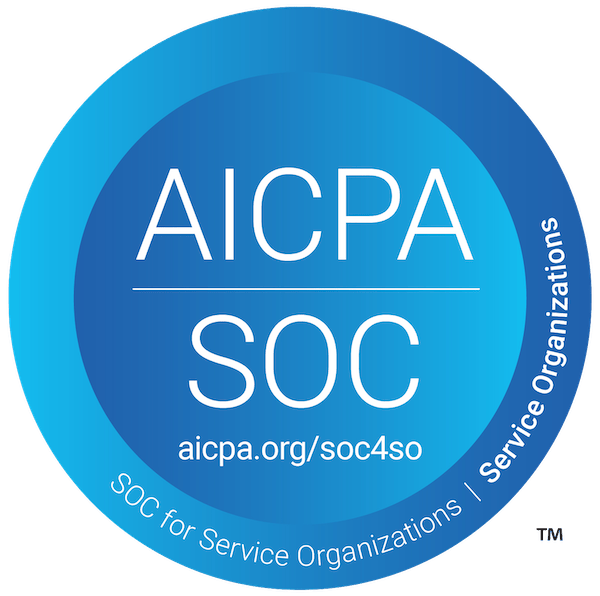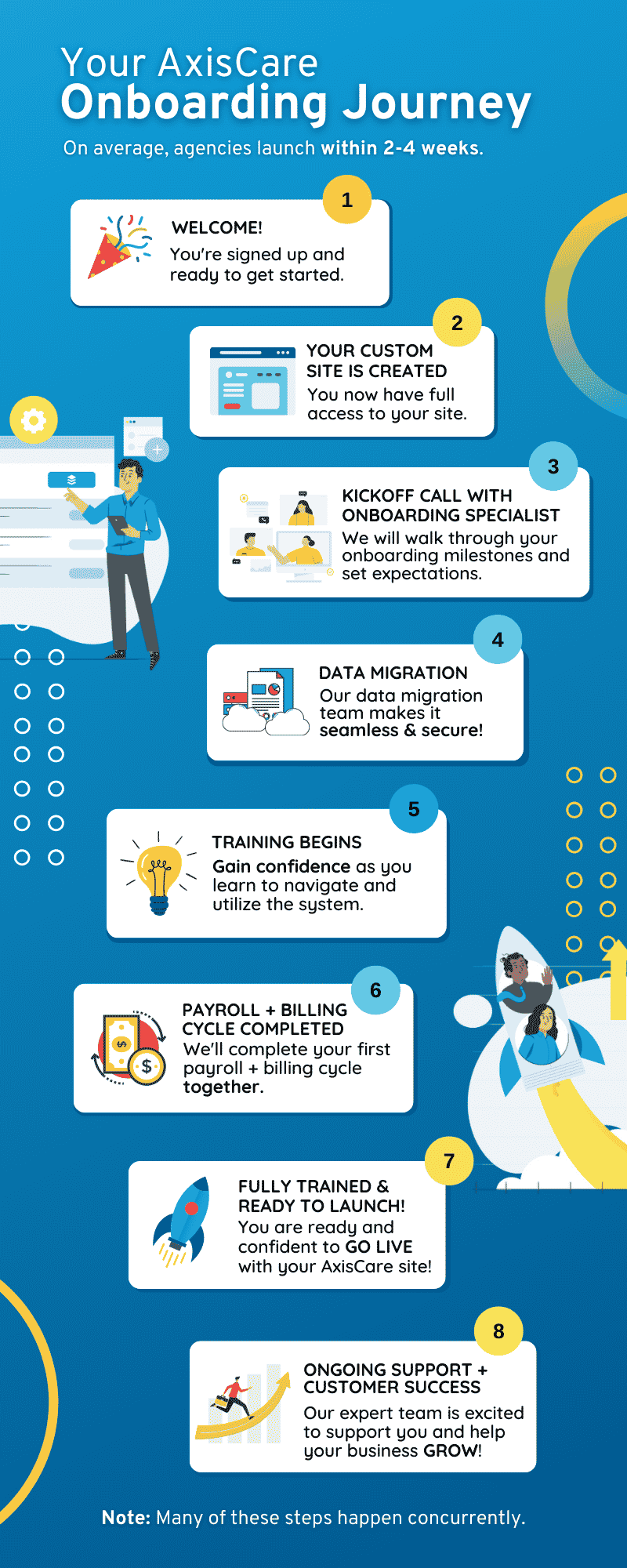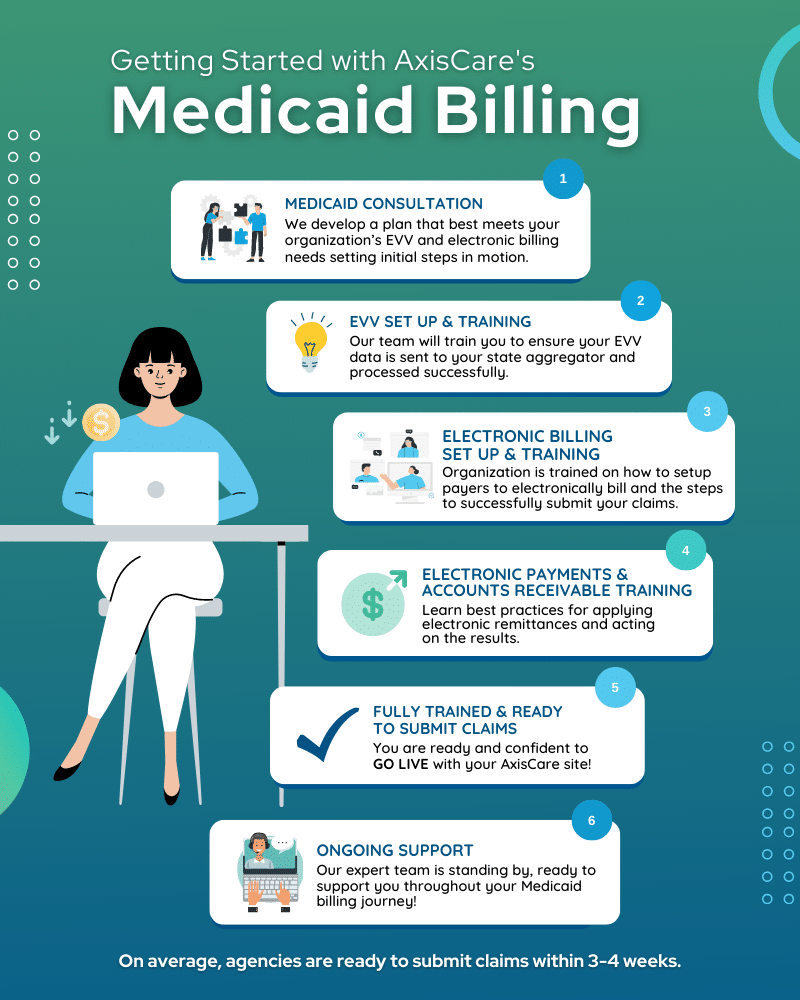Up until recently, the most innovative healthcare technology was confined to doctor’s offices and hospitals.
While there are limits to the procedures and capabilities of home health, new technologies have allowed for more and more routine healthcare to be done outside of a hospital or clinic.
Virtual appointments and at-home visits allow for elderly patients to stay in their homes longer with the help of remote monitoring and personal caregivers. People with chronic illnesses can also live more independently because of recent advancements.
Home-based healthcare offers significant benefits including decreased expenses and hospital admissions, less crowded waiting rooms, and the option for patients to stay in the comfort of their own home, especially beneficial for the elderly.
These advantages are driving further innovation in the healthcare industry, making constant headway in home health—and by necessity—in the home health care software that supports it.
What is Healthcare at Home?
Whether it’s a virtual consultation with a physician, a home health nurse delivering medication, or a caregiver checking in for a regular visit, home healthcare allows patients to receive care and treatment in the comfort of their own homes.
Why is Healthcare at Home Important?
Home healthcare provides flexibility for patients who cannot easily access urgent care or lack nearby support. This service reduces unnecessary hospitalizations and wait times, while ensuring emergency cases receive timely care. All of this is made possible by home healthcare technology and its corresponding software.
Remote Monitoring
Remote monitoring is a tool used by home healthcare providers to track vital signs from afar. Patients can stay at home while sensors assess blood pressure, blood sugar levels, pulse rate, and breathing patterns. Healthcare providers receive instant alerts if anything unusual is detected, resulting in better care and comfort without unnecessary visits to healthcare facilities.
Remote Consultations and Follow-Ups
Remote monitoring allows doctors to conduct virtual consultations and follow-ups, providing convenience and cost savings for patients, family members, and caregivers.
Monitoring and Managing Chronic Conditions
Remote monitoring tech helps manage chronic conditions like diabetes, heart disease, and asthma by tracking vital signs while patients go about their day.
Early Detection and Prevention of Health Issues
Remote monitoring is a proactive approach to healthcare that helps prevent health issues by detecting them early. It allows doctors to develop effective treatment plans and identify concerns before they become serious.
Telemedicine
Telecommunication and telemedicine allow for diagnosis and remote monitoring of patients through the use of mobile devices, making it an easy, fast, and streamlined way of receiving care.
Mobile Health Apps for Tracking Health Metrics
Healthcare apps are constantly updated and can monitor exercise, nutrition, medication, and vital signs. They’re convenient, making remote treatment more valuable.
Hospitalization and Reducing Readmissions
Telemedicine reduces hospitalizations and readmissions by allowing patients to discuss concerns with a doctor online, avoiding unnecessary waits in emergency rooms and inpatient/outpatient services.
Telehealth and Video Conferencing
Telehealth and video conferencing allow for remote medical care through virtual consultations and digital health tools.
Wearable Devices
Wearable devices are transforming healthcare by providing patients with constant medical care while allowing them to maintain their daily routines.
Wearable Devices for Remote Patient Monitoring
Wearable devices can be used for remote patient monitoring to track vital signs like heart rates, blood pressure, and oxygen levels while remaining discrete and noninvasive.
Smartwatches and GPS Tracking
Smartwatches can also be used to track physical activity, sleep patterns, and even location—a necessary component of receiving real-time, off-site healthcare services.
Glucose and Blood Pressure Monitors
Wearable devices like glucose and blood pressure monitors enable patients to track their health metrics and share them with healthcare providers instantaneously.
Home Health Care Software
Reliable software is essential for home healthcare technology to facilitate care delivery. It ensures smooth agency operations, from back-office to point-of-care, and immediate patient access to medical records, improving accuracy, accessibility, and efficiency.
Medication Management
Home health care software helps patients and caregivers manage medications by scheduling reminders.
EVV software helps healthcare providers verify and document visits to patients’ homes, ensuring compliance with Medicaid billing requirements and reducing errors in documentation for better care.
Data Analytics and Billing
Home health care software can be used for data analytics and billing purposes, allowing healthcare providers to analyze patient data and seamlessly bill their patients.
Digital Personal Health Records
Digital personal health records (PHRs) allow patients to manage their health information electronically.
This electronic access to pertinent health data is a far better alternative to traditional paper record requests. Without a middleman, access is faster, easier, and more accurate.
Integration of Electronic Health Records (EHRs)
Digital PHRs can be integrated with electronic health records (EHRs) to provide a comprehensive view of a patient’s health records at a glance.
Health Information Exchange (HIE)
HIE software allows patients to instantly share their health information with medical professionals.
Patient Portals
Patient portals can provide patients with secure access to their health information and enable easier communication between patients, family members, and healthcare providers.
Home Automation and Assistive Technologies
The use of technology has greatly benefited individuals with disabilities and limited mobility, especially those who are unable to leave their homes, as it provides an alternative to in-person hospital care.
Smart Home Devices
Smart home devices—like voice-activated assistants, smart lighting, and temperature control systems—help individuals with disabilities or mobility issues manage their homes independently.
Assistive Technologies for Disabilities or Mobility Issues
Assistive technologies including wheelchairs, mobility scooters, and prosthetic devices help individuals with disabilities or mobility issues move around more easily and perform daily tasks.
The Future of Healthcare at Home
The past few decades have given rise to endless technological innovation in home health care—and the future is continuing down the same path of increased innovation.
Artificial Intelligence and Machine Learning in Healthcare
AI and machine learning can transform healthcare at home by improving diagnoses and treatment plans. Chatbots and virtual assistants can also provide prompt and attentive care.
Augmented Reality and Virtual Reality Therapy
AR and VR can be used to provide immersive therapy experiences that help patients manage pain and recover from illness or injury from the comfort of their homes.
Advanced Robotics
Advanced robotics can be used to provide remote care and assistance for patients at home, enabling healthcare providers to deliver high-quality care without physical proximity.
Blockchain and Secure Health Data Sharing
Blockchain technology can be used to securely share health data between patients, providers, and payers, facilitating more efficient and effective healthcare delivery.
Get Ahead With AxisCare
Home health care software is an invaluable resource to home care agencies and their patients, and choosing a software that has innovation at its core is a pivotal part in your agency’s continued growth
At AxisCare, it’s our business to maintain and forecast the continued success of home health. Through our multifaceted software, we provide clients with current and projected home healthcare solutions, allowing them to thrive in an increasingly competitive industry.
By facilitating the technological component of remote care, we are doing our part to keep home care a sustainable, reliable, and preferable solution for both patients and providers.
Now, it’s our turn to help you. Join us as we revolutionize home care, and schedule a consultation, today.

